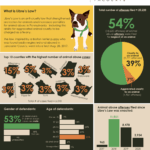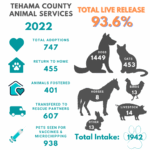In an age where digital connectivity permeates every aspect of life, online petitions have emerged as potent instruments for social change. Activists rallying against animal cruelty have increasingly turned to platforms that enable them to voice their concerns, mobilize supporters, and demand tangible action. But do these online petitions, such as “Stop Animal Cruelty,” truly wield the power to effect change? This inquiry beckons a closer examination of their efficacy, their potential limitations, and the broader implications of digital activism.
Online petitions serve as a digital rallying cry, aggregating individual voices into a collective demand. These platforms allow users to create, sign, and share petitions appealing to government officials, corporations, and various stakeholders. The ease of accessibility plays a crucial role in their ubiquity. Anyone with an internet connection can not only sign a petition but also share it across social media networks. This democratization of activism facilitates participation from diverse demographics, transcending geographical barriers and enabling global solidarity.
At the heart of this digital movement lies the notion of visibility. Petitions often illuminate issues that might otherwise remain obscured in the public consciousness. Take the example of the “Stop Animal Cruelty” initiative. By encapsulating complex narratives of suffering into digestible formats, these petitions distill the grim realities of animal cruelty down to compelling calls to action. When individuals encounter a petition that resonates with their moral compass, they are prompted to engage. This engagement, albeit virtual, has the potential to galvanize leadership, compel policy changes, and influence societal attitudes.
Moreover, the sheer volume of signatures can amplify the impact of a petition. A petition boasting thousands or even millions of signatures serves not only as a demonstration of public support but also as a formidable bargaining chip. Policymakers and businesses cannot overlook widespread dissent without consequences. They are often compelled to respond, either by enacting changes in policy or by addressing public concerns directly. This notion of accountability is paramount in advocacy against animal cruelty, as the voices of the masses challenge the status quo.
However, while the achievements of online petitions can be noteworthy, their effectiveness is not unequivocal. Critics often argue that virtual signatures lack the depth of commitment found in more traditional forms of activism. The phenomenon of “slacktivism,” where individuals feel they have contributed to a cause merely by signing a petition, raises questions about engagement levels and the depth of conviction. The ease of participation can, ironically, desensitize individuals to the underlying issues, leading to a perception that mere signature-gathering suffices as activism.
Another significant concern lies in the permanence—or lack thereof—of the digital landscape. Petitions can be transient; they can rise to prominence and fade away within a matter of days. After the initial flurry of support, the momentum can dissipate, leaving issues unresolved and campaigns stalled. Without strategic follow-up or sustained advocacy, the impact of a petition can be muted, relegating it to the annals of social media history, where it may be forgotten.
Nonetheless, the value of online petitions often extends beyond the immediate outcomes they seek. They play a pivotal role in storytelling, offering visceral insights into the plight of animals that may not otherwise reach the mainstream audience. The emotional weight of images and narratives presented alongside petitions can evoke empathy and provoke thought, fostering an environment in which discussions around animal cruelty gain traction.
Additionally, the ripple effect generated by petitions can be profound. Once individuals engage with a cause, they may explore other aspects of animal rights, diving deeper into the complex ethical and legal landscapes surrounding animal welfare. Petitions can serve as a springboard, propelling citizens toward further education and advocacy. This domino effect can create informed advocates who not only sign petitions but become vested in long-term solutions, amplifying their reach through grassroots organizing and community outreach.
The intersection of social media and online petitions thus cultivates a unique ecosystem of activism where awareness can lead to action. Viral campaigns fueled by empathy can thrust animal cruelty into the public discourse, creating a ripple effect that may compel legislative changes or even shifts in societal norms. However, the onus rests upon advocates to transition these online actions into tangible advocacy that fosters real-life engagement and systemic change.
In conclusion, while online petitions such as “Stop Animal Cruelty” play an instrumental role in raising awareness and mobilizing efforts, they are just one facet of a multidimensional approach to combatting animal cruelty. Their capacity to unite voices is undeniable, but they must be integrated with sustained activism and comprehensive strategies to yield meaningful impact. The power of digital activism is potent, yet it requires a conscientious commitment from individuals to transcend the realm of pixels and hashtags, transforming awareness into action that abolishes cruelty and enshrines the dignity of all sentient beings.








